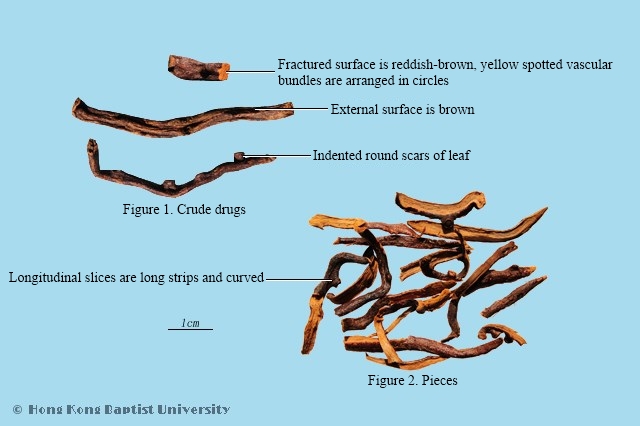Production RegionsPrimarily produced in the Chinese provinces of Sichuan, Fujian, Guangdong.
Macroscopic FeaturesIrregular side back and front, flat strips, lumps or slices, often curved, often has wrinkles and branches on both sides, 3~20cm long, 0.7~1.5cm wide. Externally covered with dense brown or reddish-brown small scales, adhered scales are membranous and shield-like, lanceolate when stretched out, with pointy apes and tassel-like edges (eyelashes), which are relatively dense at the middle stem base and the tender rhizome apex. Brown in color when scale leaf fallen off, thin longitudinal lines and grooves can be seen. Upper side has scars of leaf stem, lower side has longitudinal spinal lines and thin scars of root. Hard texture; fractured surface is reddish-brown, with white split stele arranged in long flat round-shape. Aromatic odor; slightly sweet and astringent taste.
Quality RequirementsSuperior medicinal material is thick, large, and brown.
FunctionsSupplements the kidney, strengthens the bones, heals injuries, relieves pain. apply to lumbago due to deficiency of the kidney, tinnitus and deafness, tooth mobility, falls, sudden sprains and contusions, wounds and fractures of muscles and bones respectively; externally applied to treat alopecia areata, leucoderma.
OriginThe dried rhizome of Drynaria fortune (Kunze) J. Sm.(Poly podiaceae)
